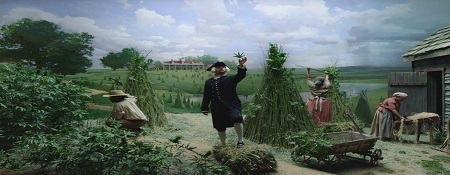
Welcome to
The National Industrial Hemp Coalition
We began this journey motivated by a desire to farm with our peers – to work together in managing land, sharing costs and equipment. To generally make our lives easier. Throughout this process we realized, that desire has echoed countless times, in many variations, through the farmers across this great Nation. It’s clear that we face common challenges. It’s also clear that by working together, we get more than just a solution to a problem; we get solidarity. We follow no set model for “A Farmers Cooperative.” We share land, we farm as neighbors and we farm together in communities and regions. We seek a wide range of solutions for working together.
We here at National IHC are learning to design our own models, our own tools and methods to match our scale, our soil variations and irrigation techniques. In the same way we design together, we share knowledge in an "Open Source Directive". We share methods of how to design our own business structures and agreements to fit unique circumstances of person and place.
Therefore, National IHC's goal is to develop this website into an open source fact based library packed full of valuable information and resource connections. Our goal with this Organization is to bring that Knowledge to the Farmer with a "Barn Raising" Philosophy. Let us begin with the History of this Remarkable Plant.

Hemp has been one of the most significant crops for mankind up until this last century. It is astonishing to see how the widespread use of hemp had been deteriorated to such an extent that people barely recognized it as anything but a plant that “got you high”.
Hemp was probably the earliest plant cultivated for textile fiber. Archaeologists found a remnant of hemp cloth in ancient Mesopotamia (currently Iran and Iraq) which dates back to 8,000 BC. Hemp is also believed to be the oldest example of human industry. In the Lu Shi, a Chinese work of the Sung dynasty (500 AD), we find reference to the Emperor Shen Nung (28th century BC) who taught his people to cultivate hemp for cloth. It is believed that hemp made it to Europe in approximately 1,200 BC. From there, it spread throughout the ancient world.
The Chinese were the first to recognize the usefulness of hemp in paper making. In approximately 150 BC, they produced the world’s first paper, completely from hemp. The oldest documents written on paper are Buddhist texts from the 2nd and 3rd centuries AD, composed of a mixture of bark and old rags, principally hemp. Hemp has been used as medicine throughout the world for centuries. Folk remedies and ancient medicines refer to the curative values of the leaves, seeds and roots. The seed and flowers were recommended for difficult childbirth, convulsions, arthritic joints, rheumatism, dysentery and insomnia.









